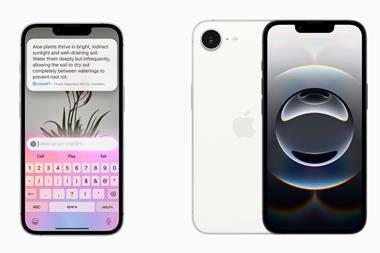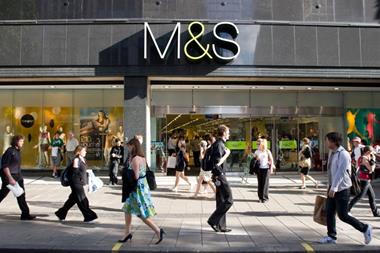PROMOTIONAL RESEARCH
Personalisation has become far more than targeted emails and discounts, now utilising AI to enhance customer experiences and drive operational efficiencies. Here we explore the trends driving AI-powered personalisation in 2025
As retailers race to keep up with snowballing trend cycles, consumers are demanding hyper-personalised and on-demand offerings. The response? Retailers are employing deeper, AI-powered personalisation.
According to AI Advancements: A New Era of Personalisation – a new Think Forward with PayPal report – brands are increasingly investing in AI-powered future forecasting, dynamic curation and holistic personalisation. The work to humanise customer-facing AI is another area drawing much attention.
Indeed, 69% of business leaders at consumer-facing online goods and service companies say they are investing more in personalisation1, with the aim for the tech to drive customer satisfaction and retention, foster increased brand trust and help businesses maintain a competitive edge.
Future forecasting
Brands have always attempted to predict future consumer trends in a bid to improve inventory optimisation or increase product turnover. However, before the dawn of AI these projections were largely based on gut instinct and informed guesswork.
With niche trends now cycling at rapid speeds, thanks in part to the viral nature of social media platforms like TikTok and Instagram, consumer tastes are shifting rapidly.
For example, ‘quiet luxury’ – a trend inspired by the hit HBO series Succession – got plenty of mileage on TikTok2 through spring last year. This trend championed expensive and minimalist but logo-less aesthetics. However, come September and an ultra-luxury resale report from Fashionphile3 revealed a contrasting surge in the popularity of bold, loud prints. By February this year, The Wall Street Journal ran a headline declaring: “Everyone’s Over ‘Quiet Luxury’4.
AI rapid data analysis and predictive analytics capabilities forecast future trends with a much higher degree of accuracy than was previously possible
In this rapidly moving retail landscape, accurate forecasting has never been more important.
It’s no surprise then that 25% of chief executives name forecast accuracy as one of their top challenges over the next three years5, and more than one quarter of retailers are investing in AI for demand forecasting and prediction6.
This tech can be considered vital for competitive forecasting today. AI rapid data analysis and predictive analytics capabilities forecast future trends with a much higher degree of accuracy than was previously possible.
This helps empower retailers to anticipate trends rather than respond to them, and develop proactive strategies with more accurate targets, helping reduce forecasting risks. Additionally, it may enable sophisticated personalisation that could help to combat issues like cart abandonment.
Case study: L’Oréal
Cosmetics giant L’Oréal has developed Trendspotter – an AI-powered social listening tool designed to spot burgeoning trends.

Its AI Trend Detection Engine analyses publicly available data such as blogs and social media posts from industry trendsetters like influencers, celebrities, beauty professionals and scientific experts. This empowers the team to spot trends in skincare, haircare and makeup on a six-to-18-month time horizon7.
Learnings from this social listening analysis are then used to inspire new product development and identify activation opportunities around existing products that target new trends.
Dynamic curation
Dynamic curation is another key AI focus for retailers, as they strive to make customer journeys more intuitive, relevant and engaging. It offers an additional way to keep up with fast-paced trends, with AI tools helping to prioritise, showcase and curate existing stock to match current consumer preferences.
With dynamic curation, AI-driven recommendation engines decide what products to show to visitors on ecommerce sites, and in what order. This tech reorders search results or groups relevant items together based on each customer’s buying and browsing history.
This improves the customer journey, providing a more straightforward path to purchase and improves cross-selling strategies.
There’s customer appetite for it too – some 50% of European consumers reported that they are frustrated by brands showing them irrelevant offers8.

So, how are retailers harnessing this advanced tech?
In February, Debenhams rolled out an AI-driven personalised beauty service on its website9. This tool, from AI and AR beauty platform Revieve, uses customer data and real-time analysis to generate personalised guidance and tailored recommendations for skincare, haircare and makeup.
Meanwhile, in April, Morrisons launched a new feature on its More loyalty app, which uses AI to personalise offers to each customer10.
Not only does dynamic curation help give shoppers a more tailored experience and smoothen the customer journey, but it helps to reduce choice overload and decision fatigue.
With cost-conscious consumers approaching shopping in a more considered manner, brands should consider using AI to personalise offerings in a way that meets price expectations and makes shoppers feel seen and understood.
Case study: Puma
International sports brand Puma has taken a creative approach to dynamic curation on its website.
The retailer uses Stylitics AI software24 to ‘brainstorm’ with customers while they browse by generating outfits based on the product the customer is viewing11.
At the bottom of the screen, customers see multiple AI-generated outfit suggestions incorporating other Puma products, inspiring them to add more items to their basket.
Download PayPal’s AI Advancements: A New Era of Personalisation today to find out more about the four ways in which retailers are harnessing AI to improve personalisation and win customer spend.
Footnotes:
1. twilio segment, The state of personalization, Mar 2023.
2. British Vogue, The 12 TikTok Aesthetics That Defined 2023, December 2023
3. Academy by FASHIONPHILE, 2023 Ultra-Luxury Resale Report, September 2023
4. The Wall Street Journal, Everyone’s Over ‘Quiet Luxury.’ Here’s What’s Next, February 2024
5. IBM Institute for Business Value, CEO decision-making in the age of AI, Jun 2023
6. NVIDIA, State of AI in retail and CPG: 2024 Trends, Jan 2024
7. L’Oréal Groupe, Trendspotter: An Ai-powered Tool To Fuel Product Innovation, web page accessed 24.10.2024
8. Marigold, 2024 European consumer trends index, 2024
9. Retail Week, Debenhams launches AI-driven personalised beauty service, February 2024































